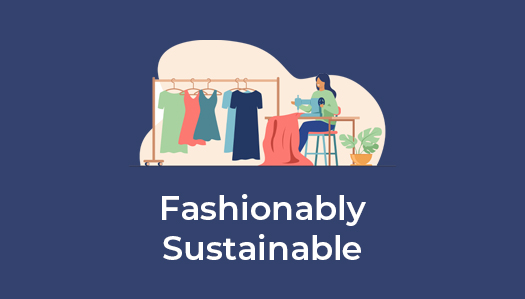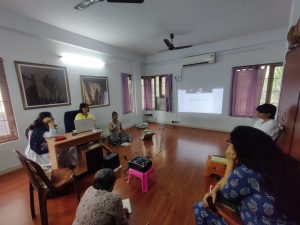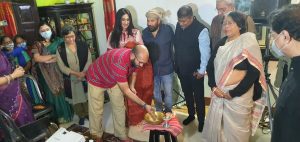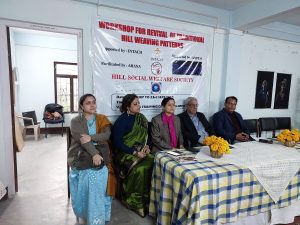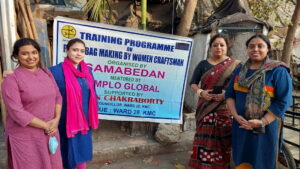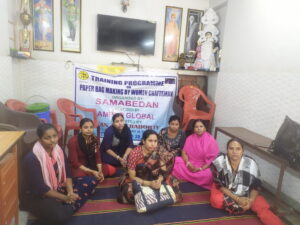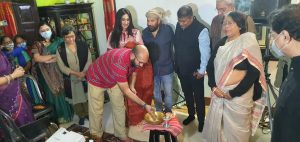Fashionably Sustainable
Fashionably sustainable means embracing eco-friendly materials, ethical production, and circular fashion practices, creating a stylish and conscious approach to clothing.
Fashion is about an individual’s aesthetic expression through apparel and accessories. In the process of making a conscious decision about the way we look; we often overlook the impact of our fashionable expression on the environment.
Unfortunately, the fashion industry is the 3rd most polluting industry in the world, and by the year 2030, it is expected that there will be 148 million tons of fashion waste. With such data, it is undeniably important to understand the importance of ‘Sustainability in the Fashion Industry’!
Sustainable fashion is fundamentally connected to the awareness of building a sustainable environment. It is about the effort and intent to bring in a change in the fashion industry through ecological integrity.
Sustainable fashion, unlike just an expression of aesthetics, is more about individuals taking responsibility to ensure consumption based on need over want, and quality over quantity. Being aware of the differences between ‘Fast Fashion’ and ‘Slow Fashion’ forms the base of ‘Sustainable Fashion’.
‘Fast Fashion’ refers to the temporary aspects of fashion – continuous and fast supply of new, cheap, accessible, and on-trend apparel and accessories in the market. This ‘fast’ aspect of consumption negatively impacts the environment, and also compromises the quality and durability, thus making ‘immediate consumption’ a necessity.
Textile production is one of the primary contributors to climate change. An estimate states that the Textile industry produces about 1.2 billion tonnes of CO2 equivalent (CO2e) per year, which is more than international flights and maritime shipping combined.
On the other hand, ‘Slow Fashion’ operates on aesthetics and quality, thus countering the system of mass-production and globalized style sense that is inherent in the business of fashion. Slow fashion focuses on building and developing a trusted relationship between the creator and the buyer, with qualitative, aesthetically heightened, and small-scale productions.
According to Ethical Consumer magazine, the value of the ethical clothing market increased by 19.9% in 2018. The awareness is apparent via a survey, where it was found that about 60% of millennials want to shop more sustainably.
Technology has been the prime enabler of ‘Sustainable Fashion’. A ground-breaking tech-for-fashion innovation is being led by Google. Google Cloud has partnered with designer Stella McCartney to build a tool that uses data analytics and machine learning to help brands estimate the environmental impact of their production process.
This tool is programmed to analyse data from multiple sources and measure the vital points such as water run-off, soil quality, greenhouse gas emissions and amount of wastage being produced in the production of garments and accessories.
This will help brands to understand the level of negative impact they have on the environment, and, thereby work towards ensuring an eco-friendly process in order to minimise the unintentional environmental harm.
Talking about how technology has been an enabler of sustainable fashion, 3D printing deserves a special mention. It significantly helps in reducing the amount of fabric waste. Outfits made from 3D printing can be produced in a shorter time span and be made readily available on an ‘as-required’ basis only.
Renowned designer Iris Van Herpen has successfully showcased qualitative and non-compromised style-quotient of 3D printed fashion at some of the leading fashion shows held in Paris, London and Milan.
3D virtual sampling is another tech-fashion innovation that enables a full-line digital review in both design and product development, thus ensuring waste-reduction. By 2021, the leading fashion brand, Tommy Hilfiger is set to follow a full-fledged 3D design process, which will entail sketching through sampling and showrooming.
This process will also ensure cost reduction associated with the materials and time related to creating physical samples. Virtual sampling will also bring in a digitized manufacturing model based on a clear understanding of what the consumers demand.
Leading innovators in the sustainable fashion league, namely, BioGlitz and Algiknit, have come up with biodegradable glitter, and fabrics made from seaweed or orange fibres, respectively. A British company Ananas Anam is reckoned from their innovation, Piñatex – leather textile made from pineapple leaves.
The process entails fiber extraction from pineapple leaves and producing a non-woven mesh that forms the base of the textile. Hugo Boss crafted limited-edition sneakers using Piñatex.
Fashion brands can walk the path of ‘Sustainable Fashion’ by creating apparel and accessories in a way that is humane and environment-friendly.
A fashion brand as a patron of sustainable fashion will focus on an enhanced humane production cycle, safer distribution ways, and democratic marketing strategies and practices. 12.5% of global fashion companies have pledged to make changes to their process by adopting sustainable practices.
Major brands including Burberry, Gap, H&M, Nike, and Stella McCartney have joined forces to create the ‘Make Fashion Circular’ initiative, which aims to incorporate renewable materials and recycling old clothes into new ones.
An estimated sum of USD 500 billion value is annually wasted due to clothing that’s neither worn nor recycled. Thus, upcycling and second-hand sales can help combat this humongous loss of the fashion industry.
Upcycling is the art of crafting rarely-used garments to create new ones. According to figures from GlobalData Retail, 56 million women purchased second hand items in 2018, representing a 27% jump from the year before.
51% of shoppers also reported that they plan to continue spending a greater share on resale goods in the next half-decade. Secondhand sale is projected to grow to nearly 1.5x the size of fast fashion by 2028. Goodwill, an organization has created a mark for itself by selling second-hand clothes.
Online re-selling businesses like Poshmark doubled its revenue from $1B to $2B in just one year.
It is note-worthy that consumers today are also aware of the enormous amount of waste produced by the fashion industry. Consumers too can contribute towards sustainable fashion by being aware of what they buy, how much they buy, and from where they buy.
A balanced awareness of need over want, trust over cost and quality over quantity is a good start to ensure ‘sustainability in the fashion industry’. Here are 5 key pointers that can set the tone for sustainable fashion:
Locally Produced: Stop the need for product transportation, thus saving the environment and time
Clothes Swapping: Double the benefit by giving the pieces a new life saving from landfill
Recycle: Ensures less wastage and comparatively less environmental pollution
Fair Fashion: Ensure to support brands that pride in offering fair wages to their workers
Minimalism: Focus on need over want, which also ensures only necessary and limited consumption
With such tech-led innovations, brands embracing eco-friendly ways of production, and consumers’ awareness on the topic, it is certain that we are in to see a better and brighter future in the fashion industry with ‘sustainable fashion’ as one of the key notions to go with.
